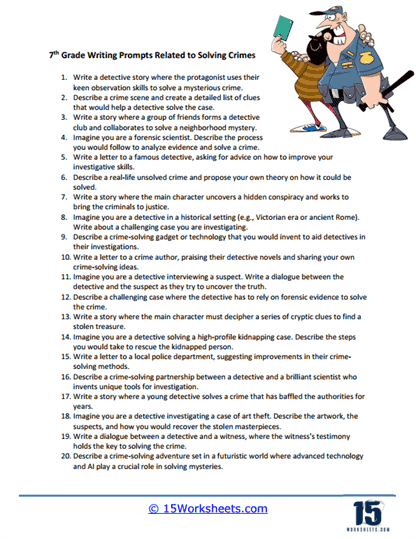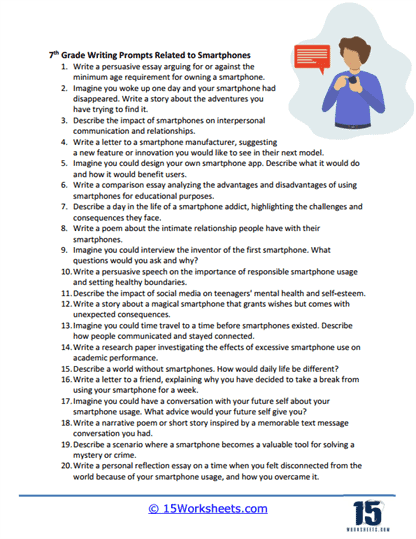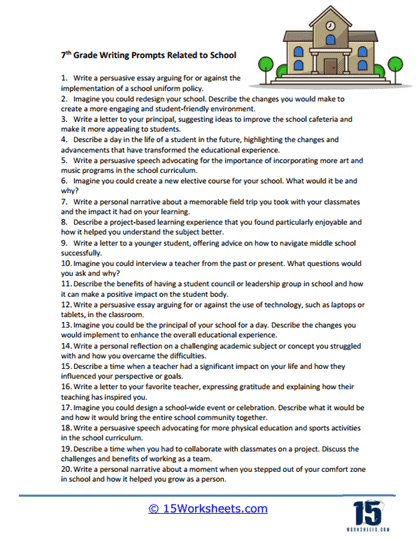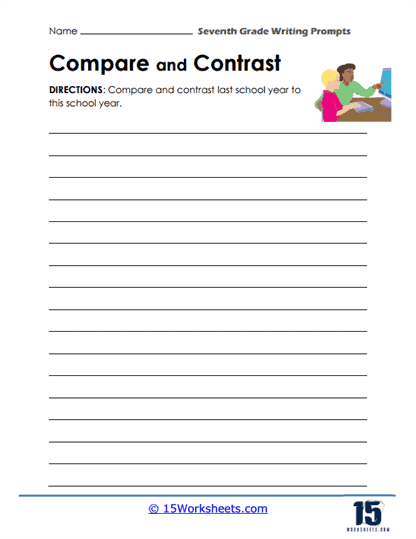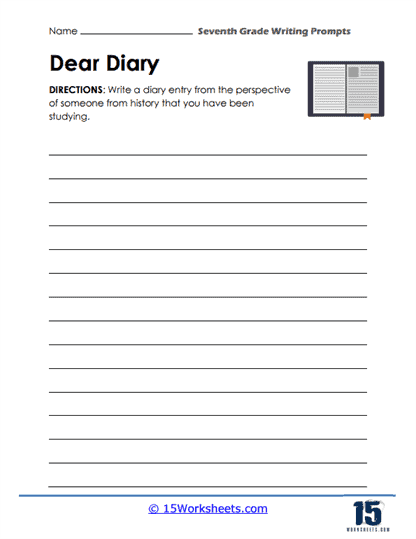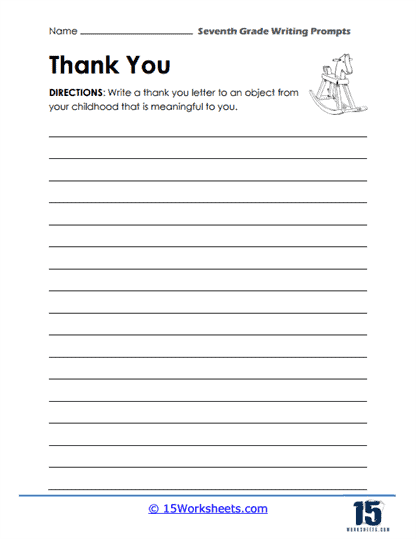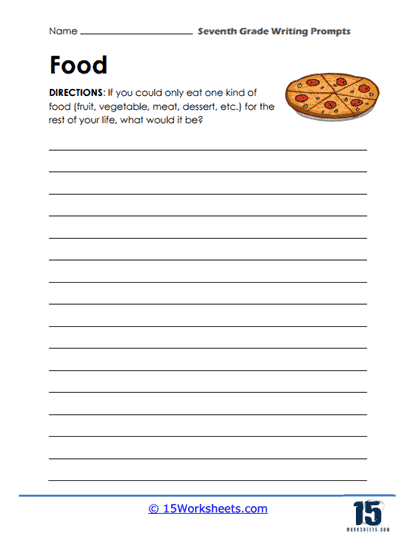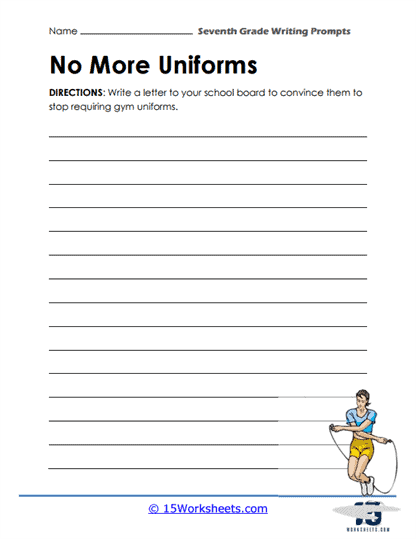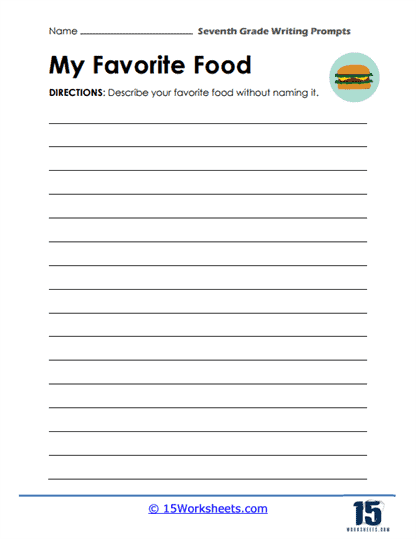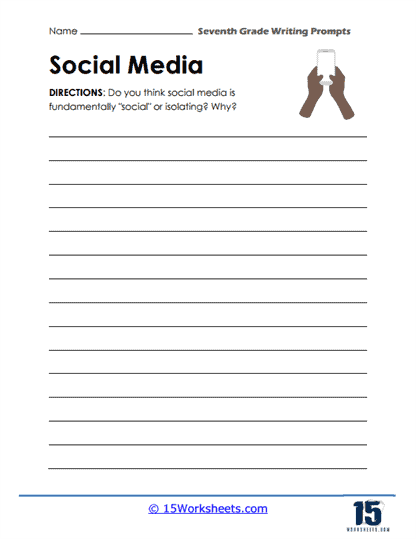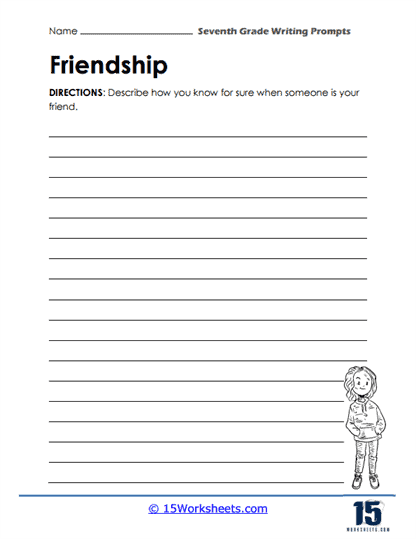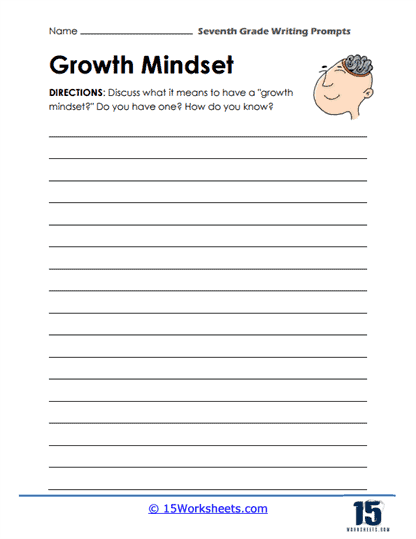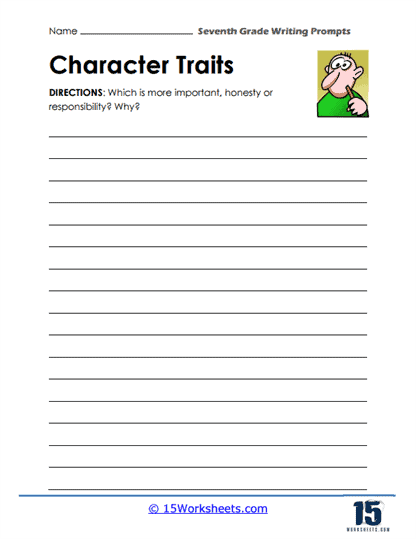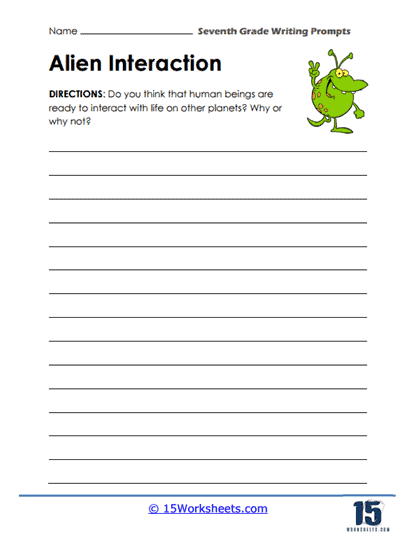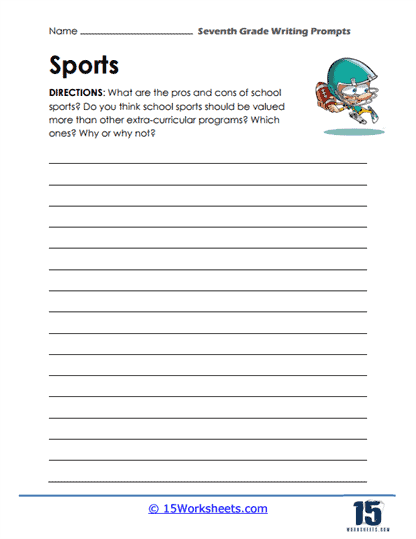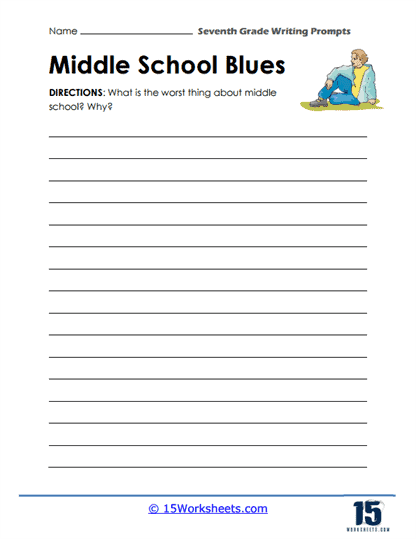7th Grade Worksheets
All About These 15 Worksheets
These worksheets typically contain a variety of writing prompts that encourage students to think critically, express their thoughts, and practice different writing styles.
Here are some common features and examples of 7th grade writing prompt worksheets:
Prompts – Worksheets include a series of writing prompts, which can be in the form of questions, statements, or scenarios. Prompts may cover various genres such as narrative, expository, persuasive, or descriptive writing.
Example – “Describe a place you have visited that had a significant impact on you. Explain why this place was meaningful and how it affected you.”
Instructions – Worksheets provide clear instructions on how to approach the writing task. They may include guidelines on organization, structure, and language usage.
Example – “Write a persuasive essay expressing your opinion on whether students should be required to wear school uniforms. Use at least three strong arguments to support your viewpoint. Remember to include an introduction, body paragraphs, and a conclusion.”
Word limits – Some worksheets may specify a word limit for the writing assignment, helping students practice concise and focused writing.
Example – “Write a short story in which a character discovers a magical object. Your story should be between 300 and 500 words.”
Graphic organizers – Worksheets may include graphic organizers or planning templates to assist students in organizing their ideas before writing. These can include story maps, outlines, or concept maps.
Example – A graphic organizer with sections for introduction, body paragraphs, and conclusion to help students structure their persuasive essay effectively.
Revision and editing tasks – Some worksheets may include exercises for revising and editing written work. These activities aim to improve grammar, spelling, punctuation, and overall writing quality.
Example – “Read the paragraph below and identify any errors in grammar or punctuation. Rewrite the paragraph with the corrections.”
7th grade writing prompt worksheets are valuable tools for teachers and students to enhance writing skills, explore different writing styles, and develop critical thinking abilities. They provide structured practice opportunities and help students build confidence in expressing their thoughts through writing.
How Do You Best Approach These Types of Writing Prompts?
When teaching students how to respond to a writing prompt, it’s important to guide them through a step-by-step process. Here’s a general approach to teaching students how to effectively respond to a writing prompt:
Understand the prompt – Start by ensuring that students thoroughly understand the writing prompt. Encourage them to read it multiple times and underline or highlight key instructions, keywords, or specific requirements.
Analyze the prompt – Help students analyze the prompt by breaking it down into its components. Discuss the type of writing (e.g., narrative, persuasive, expository), the purpose of the writing (e.g., inform, persuade, entertain), and the intended audience. This analysis will guide their approach and content.
Generate ideas and plan – Encourage students to brainstorm ideas related to the prompt. They can create outlines, mind maps, or lists to organize their thoughts and determine the main points they want to cover in their response. Planning helps students structure their writing and ensures they include all the relevant information.
Develop a thesis statement or main idea – In prompts that require an argument or opinion, guide students in formulating a clear thesis statement or main idea that reflects their stance on the topic. The thesis statement should provide a roadmap for the rest of their response.
Gather evidence and examples – For prompts that require supporting evidence or examples, teach students how to gather relevant information from credible sources such as books, articles, or personal experiences. Encourage them to find specific examples that strengthen their arguments or illustrate their points.
Organize the response – Teach students the importance of organizing their writing in a coherent and logical manner. Discuss the structure of different writing formats (e.g., introduction, body paragraphs, conclusion) and guide them in arranging their ideas accordingly. Provide them with templates, graphic organizers, or models to support their organization.
Write a draft – Encourage students to write a draft of their response, focusing on expressing their ideas without worrying too much about grammar or spelling at this stage. Emphasize the importance of revising and editing later.
Revise and edit – Teach students how to review their draft critically. Encourage them to revise their content for clarity, coherence, and supporting evidence. Additionally, guide them in editing for grammar, punctuation, sentence structure, and vocabulary usage. Peer feedback or teacher conferences can be valuable during this stage.
Proofread and publish – In the final step, teach students how to proofread their revised drafts to correct any remaining errors. Encourage them to read their response aloud or have someone else read it to identify mistakes or areas that need improvement. Finally, guide them through formatting and presenting their response in a neat and organized manner.

